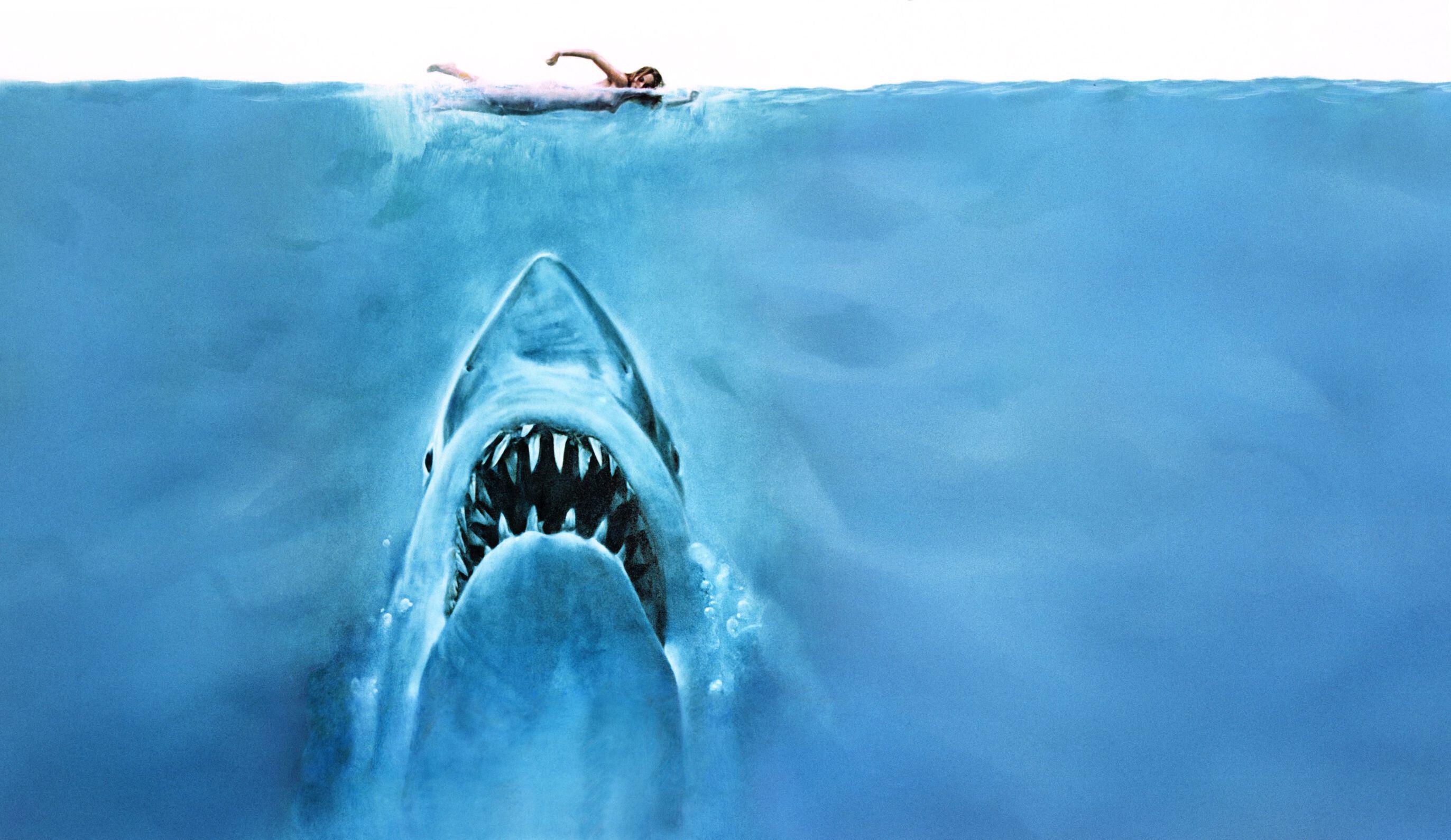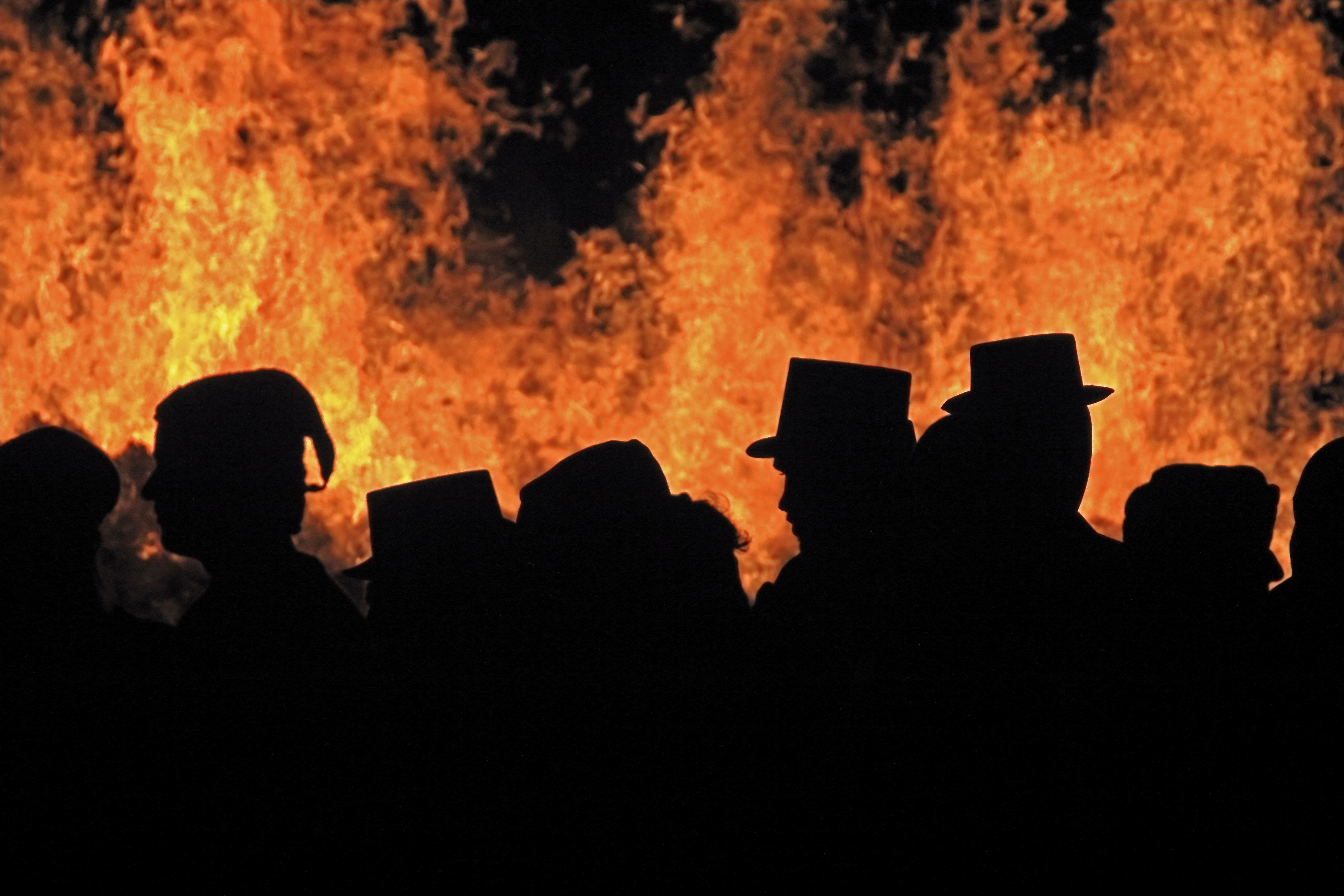The silver screen, blockbusters and bombs: The curious terminology of films explained
What links the RAF, Jurassic Park and Jaws? More than you might think.


‘None of our readers,’ urged the Rhyl Record and Advertiser on Saturday, March 27, 1897, ‘should miss this repeat entertainment, which takes place at the Town Hall, on Tuesday next…there will be many fresh Living Pictures and these are now shown on a new silver screen which brings the pictures out almost as well as electric light.’ The man behind the show was Derby-born Arthur Cheetham, who had settled in Wales in the 1880s. By the time he had arrived in Rhyl, the report attests, he had already taken it to over 30 Welsh towns and, reassuringly, ‘knew what the public want.’
What this meant was the engagement ‘at great expense,’ of the Welsh baritone, Mr T. Amos Jones, to sing a couple of popular songs, which were ‘illustrated with life modelled slides shown on the new screen’. Other ballads, sung by the likes of Mrs Cheetham, whose services were presumably secured at no expense, received the same treatment. The evening was rounded off by Madame Williamson giving ‘selections on the American concert bells. If this is not enough to fill the Town Hall to overflowing’, the article concluded without a trace of irony, ‘then nothing will’.
As well as providing an insight into Cheetham’s impresarial skills, the article contains one of the earliest printed references to a silver screen.
A cinematic pioneer, Cheetham became Wales’s first filmmaker, making about 30 shorts, the first of which, shot in January 1898, featured children playing on the sands of Rhyl. Around eight survive, including his record of Buffalo Bill Cody’s visit to Rhyl in 1903, the Royal visit to Conwy in 1899, and excerpts from the football match between Blackburn Rovers and West Bromwich Albion played in 1899, the earliest known surviving footage of a British football match. Others, such as Rhyl May Day Procession, Mailboat Munster Arriving at Holyhead, and Irish Mail Train going through Rhyl Station, were clearly designed to bring movement on to the screen.
Cheetham made his short films the mainstay of his programme, which he continued to tour around Wales, often bringing to remote rural communities their first taste of the magic of moving pictures. He called his method of projecting images onto a silver screen — the ‘Silvograph’ — and by 1906 had judged the time was right for it to have a permanent home, opening Rhyl’s first cinema, the Central Hall in Market Street.
The opening night, in late May, promised ‘the Silvograph animated pictures’ and to entice the crowd ‘150 presents were to be given away to the first persons purchasing tickets on the opening day’. Tickets cost a shilling for front seats, sixpence for second seats, and three pence for the back and gallery.
A few days later an advertisement promised ‘the steadiest pictures in the world’, projected using electric power. The content was described as amusing, entertaining, educational, and refined and there were two houses nightly, at 7pm and 8:30pm, with a complete change of programme at each house. There was also a show at 3pm on bank Holidays and ‘wet days’. Cheetham went on to open cinemas in Aberystwyth, Colwyn Bay, Manchester, and Eccles.
Exquisite houses, the beauty of Nature, and how to get the most from your life, straight to your inbox.
'The name lives on, now used as a metonym to describe motion pictures and the film industry in general'
At around the same time as Cheetham was refurbishing his Rhyl cinema in 1909, astounding the local paper with his ingenuity in keeping the daily show of ‘Silvograph’ pictures running while the works were in progress, over in America Adele De Berri, a cookware demonstrator from Chicago, was experimenting with the reflective qualities of silver paint.
Recognising its potential for producing a better projection surface for moving pictures, after months of experimentation she eventually found the right mix that worked on canvas. She patented her discovery, founded a company, Da-Lite, in 1909, and sold her invention to the picture houses of the United States.
An early adopter of De Berri’s silver screen was the Lyric Theatre in Perth Amboy in New Jersey, which the local evening newspaper reported on September 4, 1909, had ‘been equipped with a new patent silver-coated screen upon which the pictures will be shown’. The following year the Gem Theatre in North Dakota had a new screen ‘coated with aluminum or silver paint’ which made ‘each [image] stand out a great deal more distinctly than on the old screen’. The crisper images were a hit with audiences.
However, while De Barri certainly improved and patented the silver screen, it is clear that early projectionists, Cheetham amongst them, had discovered at least a decade before that by coating a silk or fabric screen with silver dust, the quality of the image was greatly enhanced.
While a distinct improvement, silver screens were no panacea. With a single source projecting onto the screen, the centre tended to be flooded with light, leaving the peripheries looking darker, a phenomenon known as hot-spotting. Over time they were phased out, except for a surprising revival with the advent of 3-D films, but the name lives on, now used as a metonym to describe motion pictures and the film industry in general.

Jaws is considered by many to be the first modern blockbuster
The goal of many associated with the silver screen is to be involved in a blockbuster, a film that proves an enormous box-office hit. The term, though, owes its origins to developments in bomb technology during the Second World War. By the early 1940s the Royal Air Force developed a range of High Capacity (HC) bombs with very thin casings, capable of carrying up to three quarters of their weight in explosives, compared with the 50% of most general purpose bombs. The early HC bombs weighed 4,000 lbs and, as the war progressed, they reached up to 12,000 lbs.
The first aircraft to carry these bombs operationally were Wellingtons during a strike on Emden in April 1941 and they went on to become the standard payload of RAF night bombers sent out on missions over Berlin. Their size meant that the bomb beam had to be removed and a slot cut into the bomb doors, the bomb just falling out of the hole when released.
HC bombs were a formidable weapon, packed with enough explosive to destroy an entire street or a large building. As the press became aware of their devastating power, they were dubbed ‘blockbusters’. Shortly afterwards, the term started to be applied to films, the magazines Variety and Motion Picture Herald hailing Bombardier, starring Pat O’Brien and Randolph Scott, as ‘the block-buster of all action-thrill-service shows’ in May 1943. With the Marines at Tarawa was described the following year in an advertisement as hitting ‘the heart like a two ton blockbuster’.
Perhaps out of war weariness, the term fell out of use only to be revived in 1948 to denote films that boasted big budgets, were epic in scale and spectacle, and anticipated to do well at the box office. The Daily Mirror in December 1950 predicted that Samson and Delilah, starring Heddy Lamare and Victor Mature. would be ‘a box office block buster’.
The Golden Age of the blockbuster arrived in the mid-1970s, heralded in by films such as Jaws (1975) and, two years later, Star Wars, both breaking box office records and enjoying lengthy runs. Their phenomenal success backed by heavy promotional activities and advertising soon became a template followed by other studios. The term blockbuster was further popularised by a chain of video rental stores that appeared on the British high street from 1988 until the business was killed off in 2013, ironically, by the emergence of streaming channels.
We have come a long way from Arthur Cheetham’s images projected onto a silver screen, accompanied by his wife’s singing.
After graduating in Classics from Trinity College Cambridge and a 38 year career in the financial services sector in the City of London, Martin Fone started blogging and writing on a freelance basis as he slipped into retirement. He has developed a fearless passion for investigating the quirks and oddities of life and discovering the answers to questions most of us never even think to ask. A voracious reader, a keen but distinctly amateur gardener, and a gin enthusiast, Martin lives with his wife in Surrey. He has written five books, the latest of which is More Curious Questions.
-
 Audi has been designing icons for 60 years. Here are some of the best
Audi has been designing icons for 60 years. Here are some of the bestFrom the first Quattro, to the TT and the R8, Audi has always been able to turn a head. Adam Hay-Nicholls, our man in Rioja, explains why.
-
 Haute dogs: How fashion’s finest would dress 11 dogs and one very spoilt cat if only they had the chance
Haute dogs: How fashion’s finest would dress 11 dogs and one very spoilt cat if only they had the chanceWe’ve matched some much-loved breeds to the designers that share their history, temperament and vibe — because why not. Illustrations by Tug Rice.
-
 Haute dogs: How fashion’s finest would dress 11 dogs and one very spoilt cat if only they had the chance
Haute dogs: How fashion’s finest would dress 11 dogs and one very spoilt cat if only they had the chanceWe’ve matched some much-loved breeds to the designers that share their history, temperament and vibe — because why not. Illustrations by Tug Rice.
-
 Baby, it’s cold outside (even if you have a natural fur coat): How our animals brave the winter chill
Baby, it’s cold outside (even if you have a natural fur coat): How our animals brave the winter chillWhen the temperature drops, how do Britain’s birds, beasts and plants keep the cold at bay? John Lewis-Stempel reveals Nature’s own thermals.
-
 Yorkshire’s bravest and most charming gentleman — the Airedale terrier
Yorkshire’s bravest and most charming gentleman — the Airedale terrierBred on Yorkshire’s riverbanks to face otters, snakes and even enemy fire, the Airedale has gone from the trenches of war to the hearts and homes of presidents and movie stars.
-
 Dangerous beasts (and where to find them): Britain's animals that are best left alone
Dangerous beasts (and where to find them): Britain's animals that are best left aloneJohn Lewis-Stempel provides a miscellany of our otherwise benign land’s more fearsome critters.
-
 A true gent lets his hair down on a Wednesday: Inside our Savile Row party to celebrate the publication of Gentleman's Life
A true gent lets his hair down on a Wednesday: Inside our Savile Row party to celebrate the publication of Gentleman's Life'The party marked the ten-year anniversary of Gentleman's Life and it was, fittingly, a party for the ages.'
-
 From the Caribbean with love: The other James Bond who wrote the definitive guide to tropical birds
From the Caribbean with love: The other James Bond who wrote the definitive guide to tropical birdsThe Caribbean plays host to a brilliant spectrum of colourful avians, says John Lewis-Stempel, as he revels in a birdwatcher’s paradise. Illustrations by Annabelle King.
-
 Best in class: This year's Georgian Group Architectural Award winners revealed
Best in class: This year's Georgian Group Architectural Award winners revealedThe Georgian Group’s Architectural Awards, sponsored by Savills, attracted another outstanding crop of entries this year. We reveal the winners, as chosen by a panel of judges chaired by Country Life's Architectural Editor, John Goodall.
-
 ‘Pope Paul V remains a popular effigy today, and gets blown up in Lewes most years’: A five minute guide to England’s wackiest Bonfire Night celebrations
‘Pope Paul V remains a popular effigy today, and gets blown up in Lewes most years’: A five minute guide to England’s wackiest Bonfire Night celebrationsThe market town of Lewes in East Sussex has not one, not two, but seven bonfire societies and its celebrations have been labelled the ‘only proper Guy Fawkes night left’.
